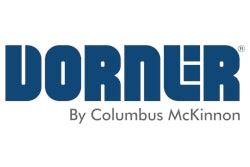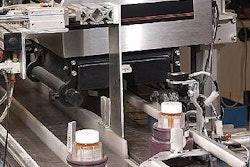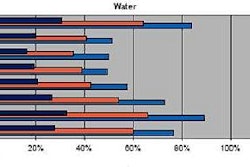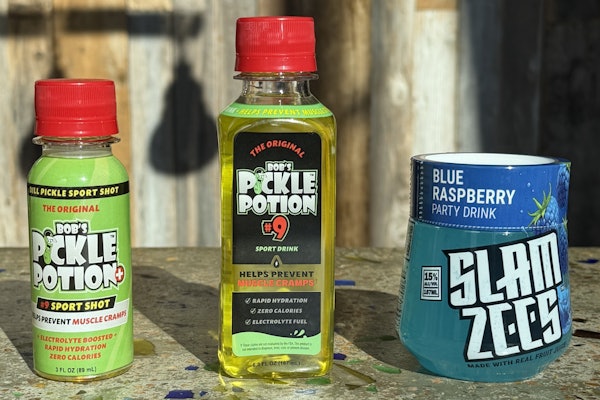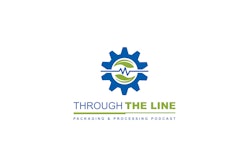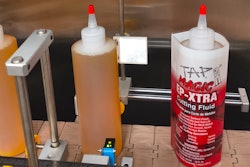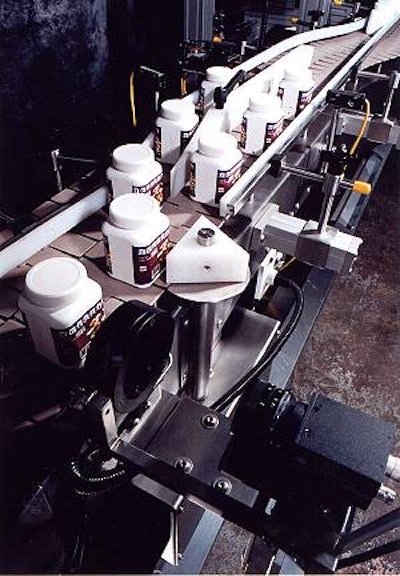
Problems: Product disturbances such as product rocking due to inappropriately adjusted guide rails, bottle flipping during the transfer between two conveyors, or excessive vibration on pulsating thermoplastic belts.
Solutions: When changing the size of containers being transported, operators need to adjust guide rail width to accommodate different dimensions. Well-designed conveyor systems should allow for repeatable positive positioning of guide rails through mechanical stops or position feedback. These features facilitate quick, accurate setup and allow operators to open or close a section of conveyor guide rails to suit the different-sized products. In addition to quick adjustment, these features should provide a digital readout, color coding, or other methods that indicate specific guide rail positions for different-sized containers. This information allows operators to establish pre-set standards, eliminate guesswork, and save time. Operators program in container size that will be used for each individual item run.
Problem: Product spillage at conveyor transfer points.
Solutions: Incorporate straight-line transfers into the conveyor system design rather than side transfers. A one-point adjustment guide rail setup offers controls of both conveyors from a single place. Minimizing belt pulsation can also reduce spillage. Inappropriate chain length and obstacles in the chain path, such as loose screws, are common causes of pulsation. Proper maintenance, visual inspections after each product run for chain elongation and loose parts helps resolve many issues before production resumes, saving time and expense.
This material is from Ignacio Munoz-Guerra, general director, AutoPak Engineering Corp. Munoz-Guerra has 25 years of experience in developing innovative solutions for pharmaceutical and consumer goods packaging lines. He earned a B.S. degree in Mechanical Engineering from Princeton University. AutoPak makes stainless-steel conveyors and ancillary equipment, and performs integration services for the pharmaceutical, cosmetic, and food industries.






